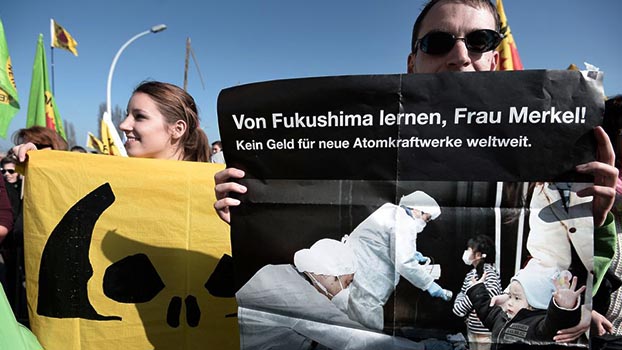Germany drew the wrong nuclear lesson from Fukushima
No country can afford to rule out fission reactors in the struggle against global warming

Ten years ago, an earthquake triggered a tsunami that caused a meltdown. It wasn’t a mixed metaphor. Starting on March 11, 2011, people across the world watched agape as three nuclear
reactors in Japan’s Fukushima Prefecture broke down and spewed ionizing radiation far and wide into land, sea and air.
Such was the shock that another chain reaction took place on the other side of the world, in Berlin. This one was political in nature. Within a few dramatic days, the German government of Chancellor Angela Merkel made a policy U-turn and embarked on an “exit” from nuclear energy on March 14, 2011. The last German reactor will be powered down next year.
That decision had a prologue of three decades. Mass demonstrations against using fission to generate electricity started in West Germany during the 1970s. This movement gave birth to the Green Party and turned German anti-nuclear zealotry into something like a new religion.
In 2000, a German government that included the Greens decided to phase out the country’s nuclear reactors. Ten years later, a conservative cabinet led by Merkel extended their life spans, but then reversed itself in the days after Fukushima.
And yet a contradiction emerged from that about-turn, one that offers a warning to other countries. In an effort to reduce its emissions of greenhouse gases, Germany has invested oodles in renewable energy sources such as solar and wind. But those fluctuate and haven’t been enough to power the economy.
With the nuclear reactors being phased out, much of the slack has therefore been taken up by coal-fired power plants.
Coal is one of the dirtiest sources of energy in terms of carbon emissions. By contrast, splitting atoms emits no greenhouse gases at all. With the dirty fuel replacing the clean one, Germany has therefore struggled to meaningfully reduce its emissions. As a bridge to an all-renewable future, it’s focusing instead on natural gas. This is cleaner than coal, but it’s still dirty. It also makes Germany dangerously dependent on suppliers such as Russia.
Hence the paradox at the core of Germany’s green movement: It pits an anti-carbon vision against an anti-nuclear one. To paper over this conundrum, the Merkel administration has decided to exit from coal as well, making Germany the first country to attempt a simultaneous and dual exit from that fossil fuel and from atoms.
But next to the rapid nuclear phase-out, the other one seems leisurely — the last coal plant is to be turned off in 2038. By contrast, the Paris Agreement, which seeks to limit global warning and was also signed by Germany, says that rich countries should phase out coal by 2030. Germany has flipped the relative urgencies of the two exits upside down.
Something has clearly gone wrong in the German debate as compared with the consensus taking shape elsewhere in the world. Germans are of course right to worry about the residual risks of nuclear power and the daunting challenge of storing atomic waste, which stays radioactive for thousands of years. But why should they be so much more scared than, say, their neighbors across the Rhine?
France gets more than 70% of its electricity from nuclear reactors and is comparatively relaxed about it — as are, oddly, the Germans when they import some of that French electricity. The role of culture and psychology in risk perception, it seems, is huge.
Some countries, especially China and India, have understood that nuclear power will remain necessary to plug the gaps left by renewables in the energy mix of the future, and are building new reactors. Simultaneously, some rich countries including the U.S. and Canada are keeping an open mind and re-imagining the use of fission technology.
Instead of ye olde power plants — huge, complex, expensive and slow — they’re building “small modular reactors” (SMRs). These nuclear units can fit onto a large truck and be driven wherever they’re needed, to be swiftly powered up and down whenever sun and wind can’t keep up. They’re safer, and some even use the radioactive waste from other reactors as fuel.
According to the International Energy Agency, meeting the emissions targets of the Paris Agreement — that is, keeping our planet from boiling — requires “large increases in efficiency and renewables investment, as well as an increase in nuclear power.” This, then, is the simple truth: We can’t succeed in saving our planet without recourse to the fuels that plug the holes left by the transition to solar and wind. Those include hydrogen, but also nuclear.
Neither Germany nor any other nation can afford a closed mind. The same is true for political parties, including the Greens. Ten years on from Fukushima, the world should commemorate the thousands of victims of the earthquake,
tsunami and the evacuation in Fukushima — as well as the one single person who was killed by the radiation itself.
Let’s make sure that such a nuclear disaster never happens again. But let’s also remember that we’ll need nuclear energy to prevent disasters that are even worse.
Andreas Kluth is a columnist for Bloomberg Opinion.
Source: Bloomberg




